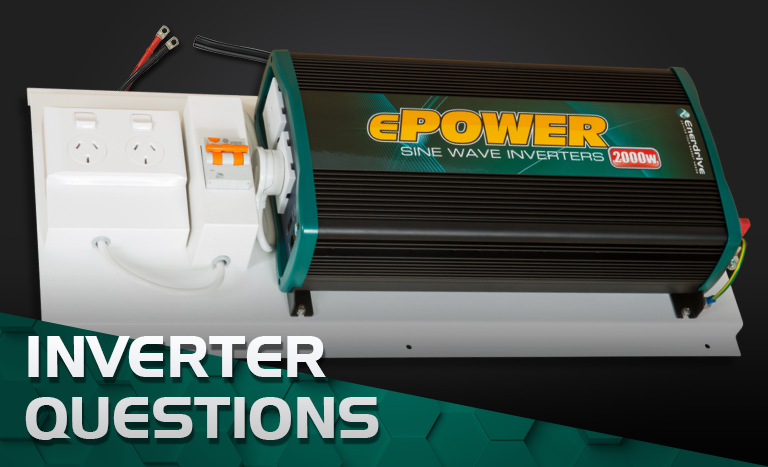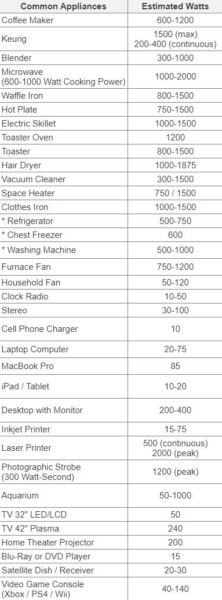To determine the size of a power inverter you need, sum the wattages of all devices you plan to power simultaneously. Choose an inverter with slightly higher wattage capacity for headroom and efficiency.
Selecting the right power inverter size is crucial for effectively running your electronic devices off a battery. A power inverter converts DC (Direct Current) from a battery into AC (Alternating Current), which is what most household appliances use. It’s essential not only to consider the combined wattage of your electrical gadgets but also to account for potential starting peaks or surges in power demand, particularly from inductive loads like refrigerators and pumps.
Always opt for an inverter with a higher capacity than your calculated needs to avoid power shortages and to promote longevity of the inverter. Ensuring compatibility with your devices’ power requirements will help maintain a steady power supply and protect your electronics from potential damage.
Introduction To Power Inverters
Power inverters are essential for converting DC power to AC power. They let you use household devices when away from a power source. Inverters come in various sizes, measured in watts. The size you need depends on the total wattage of your devices.
For basic needs, a small inverter around 200W may suffice. For more demanding applications, like running appliances, inverters range from 1000W to 5000W or more. Always consider the peak power, which is higher than the continuous power. It accounts for the extra energy needed when devices start up.
| Type | Continuous Power | Peak Power |
| Small Devices | 200W | 400W |
| Medium Devices | 1000W | 2000W |
| Large Appliances | 3000W | 6000W |
Credit: www.quora.com
Determining Your Power Inverter Needs
Knowing the power draw of each gadget is key. List every electronic you plan to run off the inverter. Check power ratings typically given in watts or amps. Add up each device’s power to find total consumption.
To account for energy loss, multiply your total wattage by 1.2. This covers inverter efficiency, typically around 80-90%. Do not ignore peak power demand. Some items need more power to start.
Take note of the power factor, which affects how an inverter performs. Motors and compressors have a low power factor. They need a larger inverter for the same wattage.
Choosing The Right Power Inverter Size
Choosing the right power inverter size is critical for optimal performance. Begin by listing all devices you need to power. Each device has a wattage rating; add these up for a total wattage need. It’s important to note that peak wattage can be higher than the continuous rating. Common guidance suggests selecting an inverter with a wattage rating 20-30% higher than your total calculated need. This accounts for unexpected power surges.
Selecting an undersized inverter can lead to premature failure and potential safety hazards. Devices may not operate correctly, or the inverter might shut down unexpectedly. With an oversized inverter, efficiency can decrease, and unnecessary power waste may occur. For sensitive equipment, consult with a specialist to ensure precise power delivery, especially in special use cases like medical or communication devices.

Credit: enerdrive.com.au
Additional Considerations
Safety and protective features are crucial in power inverters. Features like overload protection, short-circuit protection, and temperature control prevent accidents. Selecting an inverter with these features ensures safer operation.
Installing a power inverter requires following manufacturer guidelines closely. Place the inverter in a cool, dry location. Ensure ample air circulation to avoid overheating. Secure connections tightly to avoid power loss and potential hazards.
Maintaining your inverter extends its life. Perform regular inspections and keep the unit clean from dust and debris. Check for wear and tear on cables and replace them if necessary. Adhering to these practices ensures peak performance and longevity of your power inverter.
Conclusion And Final Tips
Determining the correct size of a power inverter is crucial for optimal performance. Users should consider the total watts of devices they plan to power. Prospective buyers are encouraged to sum up all appliance wattages. It’s paramount to include additional capacity to manage power surges.
As a rule of thumb, aim for an inverter that offers 20-30% more power than estimated needs. This helps safeguard against unexpected power demands. Good practice involves regularly reviewing power usage to select the most suitable inverter.
Reliable resources and reviews can immensely aid in the decision-making process. Potential buyers should research customer feedback, product comparisons, and manufacturer specifications. This research ensures a sound investment in quality and efficiency. Trustworthy sellers often provide clear information about their products’ capabilities and limitations.
| Final Recommendations | Information Sources |
| Choose a larger capacity inverter | Manufacturer’s website |
| Calculate appliance wattages | Online customer reviews |
| Factor in the power surge | Technical articles |

Credit: www.reddit.com
Conclusion
Selecting the right power inverter is crucial for your electronic devices’ longevity and performance. Assess your wattage needs thoughtfully and add a buffer for peak power demands. A well-chosen inverter can keep you powered up without hiccups. Remember, it’s better to have a bit extra capacity than to fall short.
Choose wisely, power safely.

